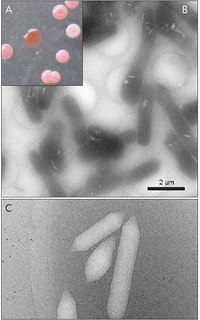
Photo from wikipedia
This study investigated the position of ultrasonic irradiation source and reactor geometry on fragmentation rate of a layered compound, α-zirconium phosphate (α-ZrP). By numerically solving the acoustic pressure distribution using… Click to show full abstract
This study investigated the position of ultrasonic irradiation source and reactor geometry on fragmentation rate of a layered compound, α-zirconium phosphate (α-ZrP). By numerically solving the acoustic pressure distribution using COMSOL Multiphysics®, it is clarified the mechanism whereby the operating factors influenced the α-ZrP dispersion to make a suggestion of guideline of the process design method. Two vessels made of glass with a flat-bottom and a spherical-bottom, respectively, were used. Although the flat-bottom vessel at lower horn position showed the best performance of fragmentation, the region of high acoustic pressure field in the flat bottom vessel sharply narrowed and the transmittance became prominently low. On the other hand, no significant difference of the transmittance value in the spherical bottom vessel between the cases of low and high horn positions could be observed and the spherical bottom vessel was robust for the horn position. These results suggest that not only the magnitude of acoustic pressure but also the size of high acoustic pressure region is also an important factor and a spherical bottom vessel is one of suitable shape which gives large size of high acoustic pressure region regardless of the horn position.
Journal Title: Ultrasonics sonochemistry
Year Published: 2019
Link to full text (if available)
Share on Social Media: Sign Up to like & get
recommendations!